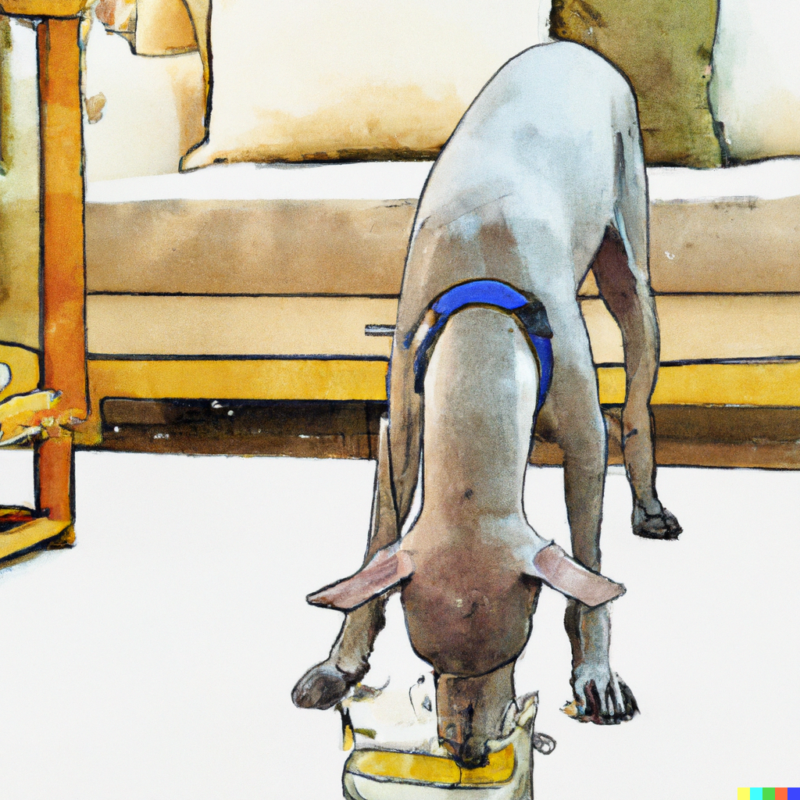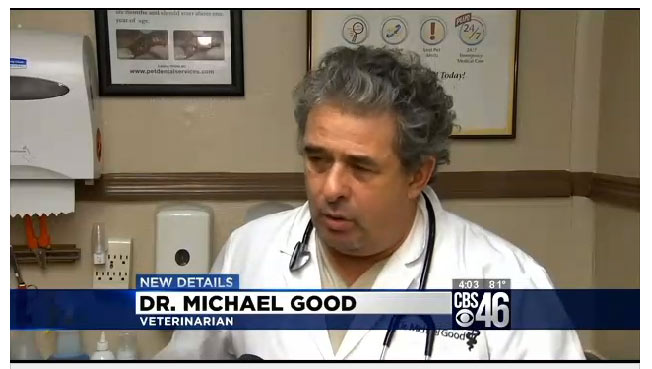What is Anal Gland Cancer in Dogs?
Introduction
When Charlie, a five-year-old Golden Retriever, started experiencing some discomfort around his hindquarters, his owner, Lisa, became increasingly concerned. After a trip to the vet and a series of tests, the diagnosis was both unexpected and devastating: anal gland cancer. As Lisa embarked on a journey to help Charlie fight this rare form of cancer, she realized how little information was available on the subject.
Anal gland cancer in dogs is a malignant tumor that arises from the anal glands in dogs. It accounts for about 2% of all canine tumors. These scent glands on either side of the dog’s anus produce and release a specific fluid during defecation or in stressful situations. Typically, this fluid serves a role in territory marking. However, cancer can develop within these glands, forming highly invasive and aggressive tumors, often identified as a mass in the anal region.
While anal sac adenocarcinoma represents only a fraction of all tumors affecting dogs, making it relatively rare, it’s often quite severe when it does manifest due to its invasive nature. This type of cancer is known for its tendency to metastasize or spread to other body parts, particularly local lymph nodes, lungs, and liver, presenting as an advanced stage of anal gland issues.
For dogs with an anal sac tumor, disease progression can give rise to various complications, thereby amplifying the challenges associated with maintaining the overall health of the affected dog. The prognosis for anal gland cancer can vary considerably, generally skewing more favorable if the disease is detected early before it has had a chance to spread.
Causes of Anal Gland Cancer in Dogs

The precise triggers behind the onset of anal sac adenocarcinoma, also known as anal gland cancer in dogs, remain unclear. Cancer is a multifaceted condition typically driven by genetic and environmental elements.
Presently, no concrete evidence suggests specific environmental aspects or behaviors result in the onset of anal sac adenocarcinoma in dogs. Notably, this form of cancer does not appear linked to inflammation or infection of the anal glands, conditions prevalent in many dogs and are often associated with anal sac disease.
Research hints at a potential genetic link, with some dog breeds showing a higher susceptibility to this type of cancer, implying a possible genetic aspect. For instance, studies indicate that the English Cocker Spaniel faces a higher risk of developing anal sac adenocarcinoma than other breeds. This tumor, often called an apocrine gland adenocarcinoma, frequently spreads to the regional lymph nodes, such as the sublumbar lymph node, resulting in an enlarged lymph node.
As with all cancers, the risk of developing an anal sac tumor escalates with age, although the disease can manifest in dogs of any age.
It’s critical to remember that our comprehension of cancer continues to evolve. Future research may offer greater insights into the causes and risk factors for anal sac adenocarcinoma in dogs. In the meantime, regular veterinary examinations provide the most effective means of ensuring early detection and treatment of this and other health conditions.
Symptoms of Anal Sac Cancer in Dogs

The symptoms of anal gland cancer (anal sac adenocarcinoma) in dogs can include:
- Frequent licking or biting at the anal area
- Loss of appetite
- Increased thirst and urination
- Lethargy or decreased activity
- Weight loss
- Constipation or diarrhea
- Changes in behavior or discomfort when sitting or lying down
- Swelling or mass near the anus
- Difficulty defecating
- Blood in the stool
It’s important to note that these symptoms can also indicate other health problems, not just anal gland cancer. Therefore, any dog exhibiting these symptoms should be examined by a veterinarian to determine the cause.
Diagnosis of Anal Gland Tumors in Dogs
The identification of anal gland adenocarcinoma, also known as anal gland cancer in dogs, necessitates a holistic process with several crucial stages:
Physical Examination
During an in-depth physical assessment, the veterinary professional will seek discernible signs of ailment, such as irregular enlargements or discomfort. The region surrounding the anus, specifically the glands of the anal sac located on each side of the anus, will be meticulously examined for any tumors or swellings indicative of a potential tumor. A rectal examination, which includes rectal palpation, may be performed to check for abnormalities. The veterinarian will also evaluate the dog’s abdomen and other body areas for unusual signs. The dog’s overall physical health, including weight, coat quality, and signs of unease or distress, are also considered during this examination.
Fine Needle Aspiration or Biopsy
A fine needle aspiration (FNA) may be performed if the physical assessment reveals a suspicious mass. FNA entails inserting a slender needle into the tumor to extract a cell sample, which is then microscopically analyzed for signs of cancer cells. Alternatively, the vet may conduct a biopsy involving surgical extraction of a minor tissue sample from the mass for a more detailed examination. A biopsy can offer a more definitive insight into the mass’s nature, including the confirmation of cancer and the type of cancer present, potentially identifying carcinoma of the apocrine glands.
Blood Tests
Comprehensive blood tests, such as a complete blood count (CBC), biochemistry profile, and potentially a coagulation profile, can assist in evaluating the dog’s overall health and any systemic issues. For cases of anal gland adenocarcinoma, hypercalcemia, or elevated blood calcium levels, is a common concern associated with this form of cancer. These blood tests also provide critical information about the dog’s organ function, including liver and kidneys, which could be impacted if cancer has spread.
Imaging
Imaging methods such as X-rays, an abdominal ultrasound, or CT scans can assist in determining the tumor’s size, location, and whether it has spread to surrounding lymph nodes or other parts of the body, such as a metastatic lymph node. While X-rays offer detailed imagery of the bones and specific soft tissues, ultrasound provides an enhanced view of the structure of soft tissues and organs. In more complex or advanced cases, CT scans, offering even more detailed imagery, may be used. These imaging studies can also aid in identifying metastases or secondary tumors in other body areas, indicating the spread of cancer.
Urinalysis
Urinalysis involves testing a urine sample from the dog for signs of disease. This test can assist in identifying urinary tract infections, kidney disease, and other urinary system complications. If the dog demonstrates elevated calcium levels in the blood (hypercalcemia), it may affect kidney function, leading to alterations in urine concentration and potential kidney damage.
Each of these steps offers essential information to the overall diagnostic image. If anal gland cancer is identified, a consultation with a veterinary oncologist is recommended to use this information to stage the cancer, understand its advancement, and help guide the treatment plan. This helps confirm the diagnosis and outlines the treatment options for the area surrounding the tumor.
Treatment Options for Anal Sac Tumors in Dogs
The treatment approach for anal gland cancer, also called anal sac adenocarcinoma, in dogs usually involves an amalgamation of therapies. These depend on the disease stage, the dog’s overall health, and the cancer’s spread to other body parts. The most common treatment options are:
Surgery
When the anal sac mass is localized and hasn’t widely spread, the first choice for treatment is typically an anal sacculectomy, the surgical removal of the anal sacs. The aim is to eliminate the tumor and any nearby lymph nodes that may be impacted. However, due to the anal glands’ location, complete surgical removal can be challenging and might not always be feasible.
Radiation Therapy
Radiation therapy may be recommended if surgical removal isn’t possible due to the tumor’s location or if the cancer has metastasized to the nearby lymph nodes. This therapy involves using high-energy radiation to kill cancer cells and reduce tumor size. Often, radiation therapy is used in conjunction with surgery, either before surgery to decrease the tumor size and facilitate removal or post-surgery to eliminate any lingering cancer cells.
Chemotherapy
When cancer has metastasized to other body parts or if surgery and radiation aren’t viable options, the treatment of anal gland adenocarcinoma may involve chemotherapy. Chemotherapy utilizes drugs to destroy cancer cells and can help slow disease progression and alleviate clinical signs, enhancing the affected dog’s quality of life.
Palliative Care
Palliative care might be suggested in severe cases where the cancer is significantly advanced or treatment options like surgery, or chemotherapy are unsuitable due to the dog’s health. This approach focuses on symptom management and prioritizing the dog’s comfort over attempting to cure the disease.
Hormone Therapy
Some cases of anal sac adenocarcinoma can result in elevated blood calcium levels, a condition termed hypercalcemia, which can trigger symptoms such as excessive thirst and urination, decreased appetite, and lethargy. Should this occur, hormone therapy may be used to reduce calcium levels and alleviate these symptoms.
Clinical Trials
In certain cases, innovative therapies for anal gland cancer may be accessible through clinical trials. This provides an opportunity to receive treatments that may not be widely available.
The optimal treatment option will depend on multiple factors, including the disease stage, the dog’s overall health, and the preferences and financial considerations of the owner. Your veterinarian may discuss all available options and assist you in making the best decision for your pet, even when definitive treatment is still being sought.
Recovery and Management of Anal Gland Cancer in Dogs
Recovery and management after treatment for anal gland cancer in dogs can vary greatly depending on the extent of the disease and the treatment methods used. However, some general aspects include:
- Post-Surgery Recovery: If surgery were performed to remove the tumor, the initial recovery period would involve managing pain and preventing infection at the surgery site. Your vet will likely prescribe pain medications and may also prescribe antibiotics. It’s important to monitor the surgery site for any signs of infection, like redness, swelling, or discharge, and to ensure your dog doesn’t lick or chew at the area. A protective collar may be needed to prevent this.
- Follow-up Visits: Regular visits to the vet will be necessary to monitor your dog’s recovery and check for signs of recurrence or spread of cancer. These visits may include physical exams, blood tests, and imaging studies. The frequency of these visits will depend on your dog’s case, but they might start every few weeks or months, then become less frequent if your dog is doing well.
- Management of Side Effects: If your dog underwent chemotherapy or radiation therapy, there might be side effects to manage, such as nausea, loss of appetite, or fatigue. Your vet can recommend strategies and medications to help manage these side effects. If your dog experiences elevated calcium levels due to cancer, ongoing management might include medications and regular blood tests to monitor calcium levels.
- Ongoing Care: Quality of life is a key aspect of managing a dog with cancer. This includes ensuring your dog eats well, maintains a healthy weight, gets regular, gentle exercise, and receives plenty of love and attention. Any changes in behavior, appetite, or physical condition should be reported to your vet.
The prognosis for dogs with anal gland cancer can vary widely, and it’s important to have open discussions with your vet about what to expect and how to support your dog during this time best. Every dog is unique and will have their journey with this disease.
Frequently Asked Questions
Disclaimer: The information provided on this veterinary website is intended for general educational purposes only and should not be considered as a substitute for professional veterinary advice, diagnosis, or treatment. Always consult a licensed veterinarian for any concerns or questions regarding the health and well-being of your pet. This website does not claim to cover every possible situation or provide exhaustive knowledge on the subjects presented. The owners and contributors of this website are not responsible for any harm or loss that may result from the use or misuse of the information provided herein.







